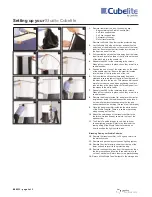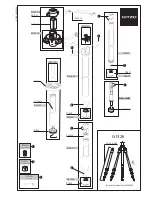
20
6.4.2 Installation in closed metal tanks (with flange plage)
Flange plates are not supplied. They must be ordered separately (→ 3).
fig. 6-8
fig. 6-9
d
R
A B
►
Arrange for a bore hole in the tank lid� It must have a minimum diameter (d)
to enable sufficient transfer of the measured signal to the probe (fig� 6-8)� The
diameter depends on the wall thickness of the tank lid:
Wall thickness [mm]
1���5
5���8
8���11
Bore hole diameter [mm]
35
45
55
►
Install the flange plate with the flat surface showing to the tank and fix it with
appropriate screws�
A seal (B in fig� 6-9) can be inserted between flange plate and tank� Some
flange plates are supplied with seal�
►
Ensure cleanness and evenness of the sealing areas, especially if the tank is
under pressure� Tighten the fixing screws sufficiently�
►
Screw the unit into the flange plate using the process connection and tighten
firmly�
►
Make sure that the supplied sensor seal (A in fig� 6-9) is correctly positioned�
6.4.3 Installation in open tanks
►
For installation in open tanks, use a metal fixture to install the unit� It serves as
a launching plate (R); minimum size: 150 x 150 mm for a square fixture, 150
mm diameter for a circular fixture�
►
If possible, mount the unit in the middle of the fixture� The distance D2 must not
be below 40 mm, higher for probe lengths > 70 cm and in case of heavy soiling
















































